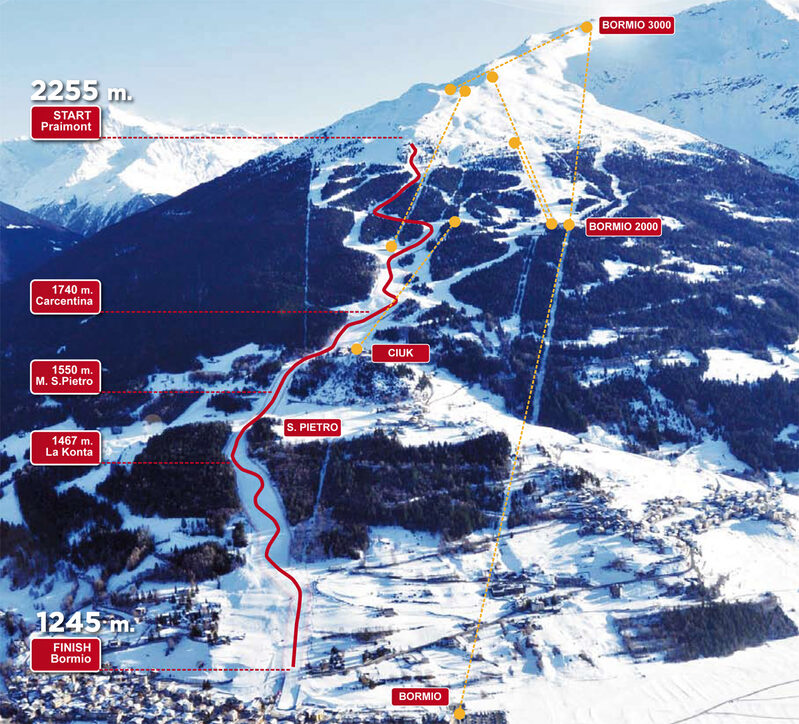The FIS Ski World Cup 2024 will return to Bormio with an exciting racing program.
The Stelvio slope will be the usual stage of speed and adrenaline with two races on the calendar: the Men’s Downhill on 28 December and the Men’s Super G on 29 December.
Of course, the downhill in Bormio is a costant appointment in the men’s World Cup calendar since 1993 up to today.Winning on the Stelvio slope is a result that only the greatest champions of alpine skiing have achieved. From 1985 up to today, the fastest jet-men challenging have considered the Stelvio as the most difficult, tiring and exciting piste of the entire Ski World Cup circuit.
program of the ski world cup
Visit www.bormio.eu
Stelvio: World Cup Course
The start line is at an elevation of 2,255 metres, above the La
Rocca jump. The run is almost 3,230
metres long with an elevation change of 986 metres. It plummets
dramatically from the start with the first challenging turns leading into the
La Rocca jump, where the pine and larch forest begins.
Then it’s straight into
the Canalino Sertorelli, a 300-metre diagonal where the skiers pick up pace
considerably. After the 200-metre Fontana Lunga turn the skiers head into the
treacherous Ermellini turns and the Carcentina, one the most spectacular parts
of the course, which has proven decisive in many previous World Cups.
After the
Carcentina diagonal the skiers have 100 metres on the Ciuk flats (1,638 m
a.s.l.) before the long San Pietro jump,
where the competitors reach their highest speeds. This is the steepest section
of the course with a maximum gradient of 60%. The flat stretch after San Pietro
leads into the last wall, which drops dramatically and remains steep for a good
200 metres. The skiers reach speeds of over 100 km/h as they approach the last
jump and hurtle under the finish banner in Bormio (1,245 m a.s.l.).




